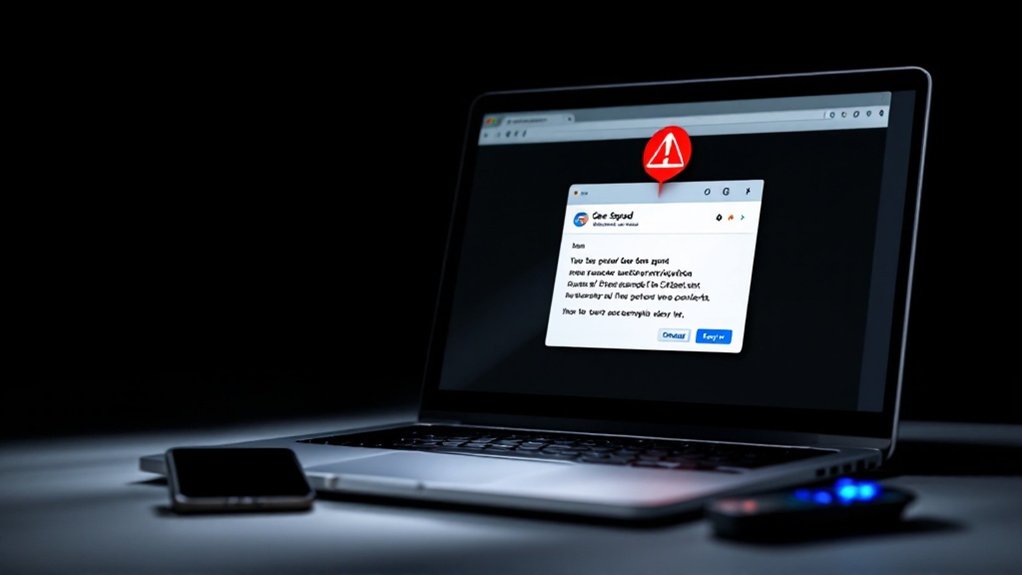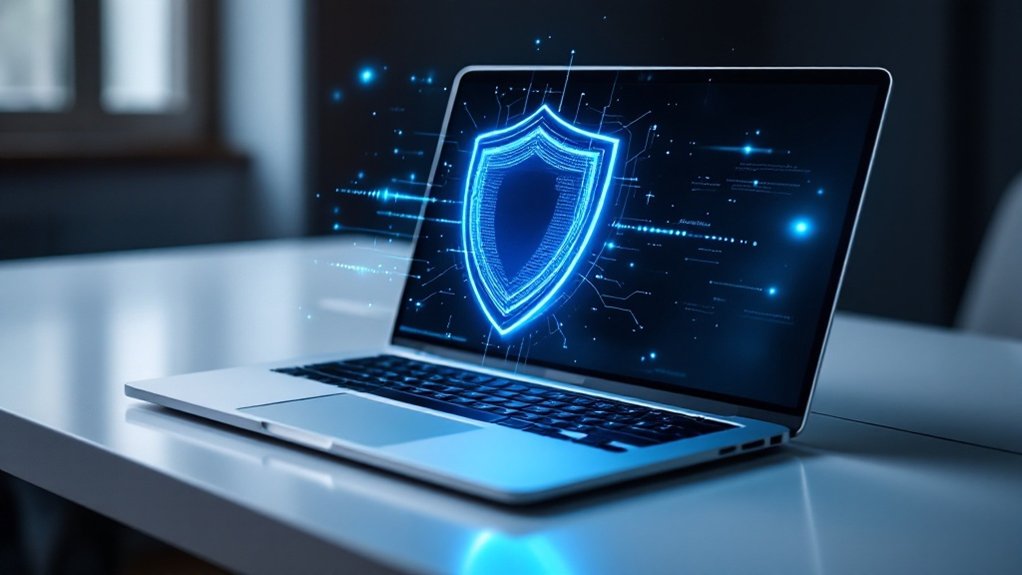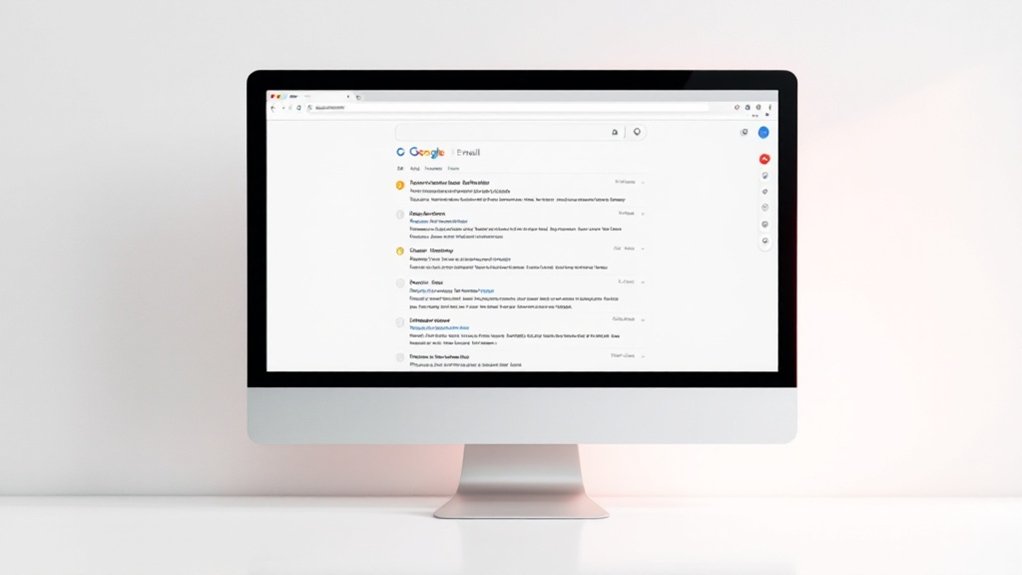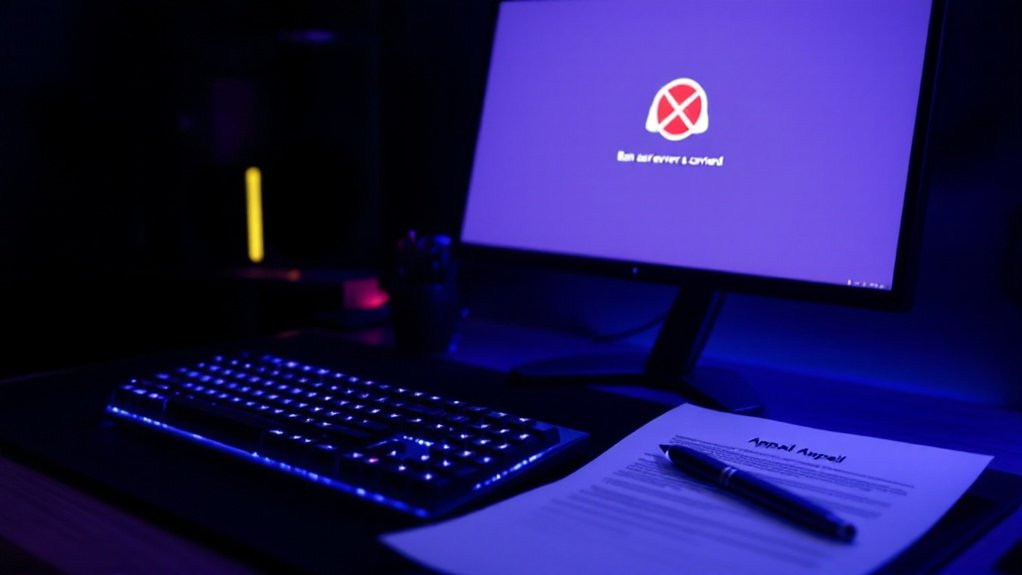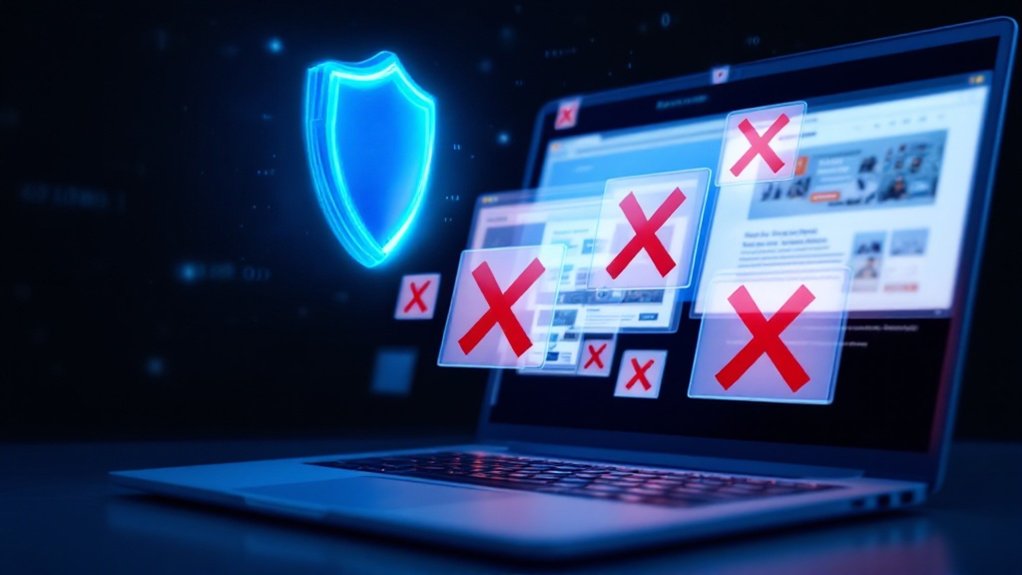To report fake Geek Squad emails, users should first mark the message as spam in their email client and block the sender. The suspicious email can then be reported directly to Geek Squad at 1-888-237-8289 or [email protected], with screenshots and details included. Additional reporting should be filed through the FTC’s ReportFraud.ftc.gov portal and IC3.gov. These official channels allow authorities to track cybercriminals and prevent further fraud, as thorough documentation strengthens investigation efforts.
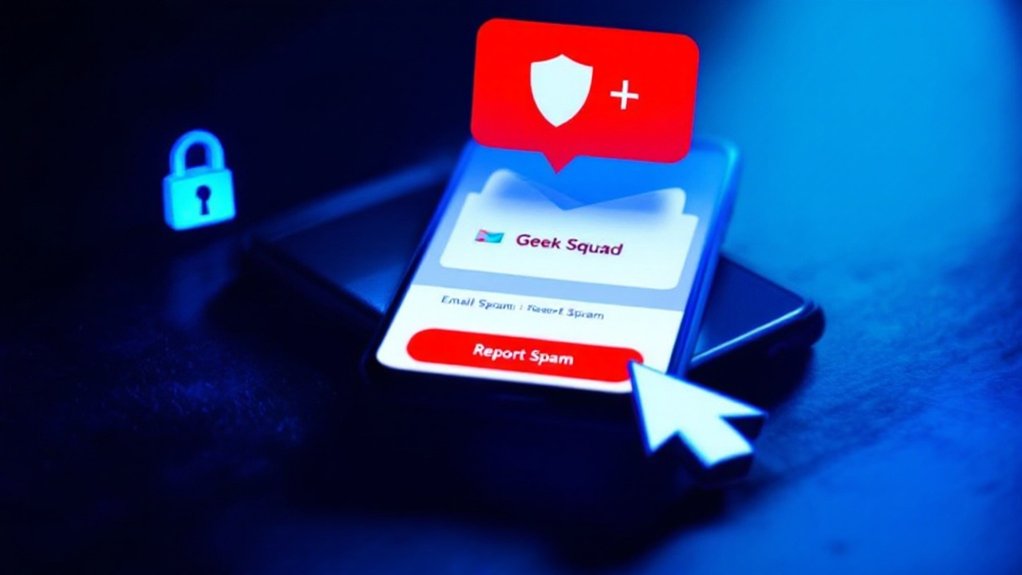
As cybercriminals become increasingly sophisticated in their attempts to deceive consumers, fake Geek Squad emails have emerged as a prevalent phishing scheme targeting unsuspecting computer users. The first critical step in combating these fraudulent communications is to carefully identify suspicious elements, including unusual sender domains, grammatical errors, urgent language, and unsolicited requests for personal or financial information. Scammers often use poor grammar to create a sense of urgency in their messages. In 2023, these scams resulted in over $1 billion in reported losses across various impersonation schemes.
Fraudulent Geek Squad emails represent a growing cybersecurity threat, using deceptive tactics to steal personal data from unsuspecting victims.
Recipients should compare any suspicious messages with legitimate Geek Squad email formats and be particularly wary of threats regarding account closures or service interruptions. Implementing two-factor authentication provides an additional layer of security against unauthorized access to accounts.
Upon identifying a fraudulent email, users should immediately mark it as spam within their email client and utilize available reporting features to alert their email provider. Adding the sender to a blocked list and enabling improved spam filtering options can help prevent future fraudulent communications.
Moreover, victims should contact Geek Squad directly at 1-888-237-8289 or email [email protected] to report the incident, providing screenshots or forwarded messages as evidence.
Federal authorities have established specific channels for reporting cyber fraud. The Federal Trade Commission‘s ReportFraud.ftc.gov portal accepts detailed complaints about phishing attempts, while the Internet Crime Complaint Center (IC3) processes reports through ic3.gov.
These reports should include extensive information about the incident, any financial losses, and compromised personal data, regardless of the monetary impact.
Local law enforcement plays a pivotal role in addressing cyber fraud at the community level. Victims should contact their local police department‘s non-emergency number to file a report, especially if personal information has been compromised.
Obtaining a case number and inquiring about available identity theft resources can prove valuable for future reference.
The final step in addressing fake Geek Squad emails involves raising public awareness. Sharing experiences through social media platforms, community forums, and neighborhood apps helps alert others to potential threats.
Active participation in cybersecurity awareness programs and contributing to scam-tracking websites creates a collective defense against evolving phishing tactics, ultimately helping to protect vulnerable consumers from similar schemes.
Frequently Asked Questions
How Can I Tell if My Geek Squad Subscription Is Actually Legitimate?
To verify a Geek Squad subscription’s legitimacy, customers should first log into their Best Buy account through the official website to check subscription status and payment history.
Additional verification steps include examining email communications for authentic sender addresses, confirming pricing matches standard rates, and reviewing renewal dates against original purchase timelines.
For maximum security, enabling two-factor authentication and consulting Best Buy’s fraud department can provide definitive confirmation.
Can Scammers Access My Computer if I Clicked a Fake Email Link?
Clicking malicious email links can certainly grant scammers access to computers through various attack vectors.
When users click these links, cybercriminals can exploit browser vulnerabilities to install malware, keyloggers, or ransomware.
Immediate signs of compromise include slow performance, unauthorized pop-ups, and suspicious network activity.
Security experts recommend disconnecting from the internet immediately after clicking suspicious links, running antivirus scans, and changing all passwords from a separate, uncompromised device.
What Personal Information Do Real Geek Squad Emails Typically Request?
Legitimate Geek Squad emails typically reference existing accounts or services, including order numbers, appointment details, and service ticket information already on file.
They may ask customers to confirm previously registered device information or verify scheduled appointment times.
Nevertheless, authentic communications never request sensitive data like full credit card numbers, Social Security numbers, passwords, or banking details via email correspondence.
Does Geek Squad Ever Call Customers About Their Email Subscriptions?
Geek Squad does not make unsolicited calls regarding email subscriptions, as confirmed by official Best Buy communication policies.
The company strictly communicates through authorized channels, primarily using @bestbuy.com or @geeksquad.com email domains.
Any phone contact from Geek Squad occurs only after customers initiate service requests.
Unsolicited calls claiming to be about email subscriptions are typically indicators of potential scam attempts targeting unsuspecting consumers.
How Long Does It Take for Geek Squad to Investigate Reported Scams?
Geek Squad investigations into reported scams usually take 2-4 weeks to complete, with complex cases extending up to three months.
High-priority incidents receive expedited review within 7-10 business days, as cases involving multiple reports are fast-tracked.
Best Buy provides status updates every 7-10 days during active investigations, with final findings typically shared within 30 days of completion, followed by 3-6 months of continued monitoring.
